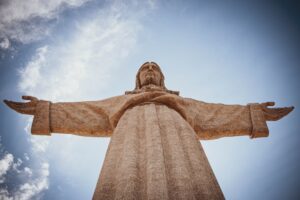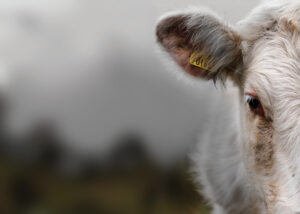Like most North Americans, I grew up in a household where no meal was complete without a serving of meat, although I didn’t really know where the meat that I ate came from. But when I got a job at 18 in a meat-packing plant, where I was exposed first-hand to the cruelties and violence that are perpetrated on sentient animals as a matter of routine, it was an in-your-face kind of experience that I could no longer ignore.
It is clear from numerous passages in both the Old and New Testaments that God grants his compassion to animals as well as humans. As Proverbs 12:10 says quite plainly, “The righteous care for the needs of their animals, but the kindest acts of the wicked are cruel.” Paul commands Christians in Colossians 3:12 to clothe themselves with “compassion, kindness, humility, gentleness and patience.”
How many of us truly consider the lives and experiences of the animals who end up on our dinner plates? Animals may once have been raised with care and love on family farms, but the modern reality is very different. The rise of factory farming in recent decades has drastically changed the way society produces meat. Family farms have been taken over by corporate industrial operations that treat animals as mere units of production. The more animals they can churn out, and the faster they can do so, the higher the profit margin. This sets up a system with a strong incentive to ignore the welfare of the 10 billion farmed animals we kill each year.
Another devastating consequence of eating meat and other animal products is that, while westerners grow increasingly obese on these foods, more than a billion people around the world go hungry. North Americans and Europeans import vast quantities of feed grain from Second and Third World countries to support our meat habit. Nearly half of the corn, soy beans and grain we produce each year is fed to livestock, fattening up the animals so they can be slaughtered quickly.
Obviously, feeding food to animals first, instead of directly to the people, is a terribly inefficient use of resources. To produce just one kilogram of beef, it takes an average of 10 kilograms of grain. Instead of feeding grain and other food to animals, we could cut out this step and distribute the food directly to the poor and the hungry. By going vegetarian, we could each help feed many more hungry mouths and eradicate world hunger.
Eating meat also takes an enormous and devastating toll on the Earth, over which God has given us stewardship. Our planet is plagued with numerous environmental crises, including soil, water and air pollution; water shortages; resource depletion; species extinction; and, worst of all, global warming. This issue first came to light in 2006, when a UN report revealed that raising animals for food is responsible for 18 percent of total planetary greenhouse gas emissions—more than the entire transportation sector.
Further, animal agriculture causes biodiversity loss when land, like Brazil’s rainforest, is cleared for more pasture space or to grow more grain to feed animals. The land used to feed animals accounts for 70 percent of all agricultural land and 30 percent of the Earth’s surface. The environmental havoc wreaked by the animal agriculture system is fundamentally incompatible with our role as stewards of this beautiful and unique planet created for us by God.
And all of this for what? It’s certainly not for our health. As we learn more, it’s becoming apparent that eating meat and other animal products is making society sick. Meat has been strongly linked to heart disease, diabetes, cancer, stroke, obesity and a whole host of other preventable diseases. The recent hit film, Forks Over Knives, shows us how many of these diseases can be controlled, or even reversed, simply by shunning meat.
Meat eaters often look to Jesus to validate their dietary choices, arguing that because he ate meat, so should we. But I ask you to consider the differences between the world Jesus lived in and the world of today. Then, people ate relatively little meat; it came from healthy animals raised on small farms, and everything was local. Factory farming hadn’t been invented and we weren’t facing an ecological crisis. If Jesus were to return tomorrow, it’s hard to imagine that he would choose to eat meat under modern conditions.
John and Fany Borger live on a farm near De Winton, Alta., and attend Trinity Mennonite Church there. They both work for human and animal rights and social justice.








Leave a Reply
You must be logged in to post a comment.